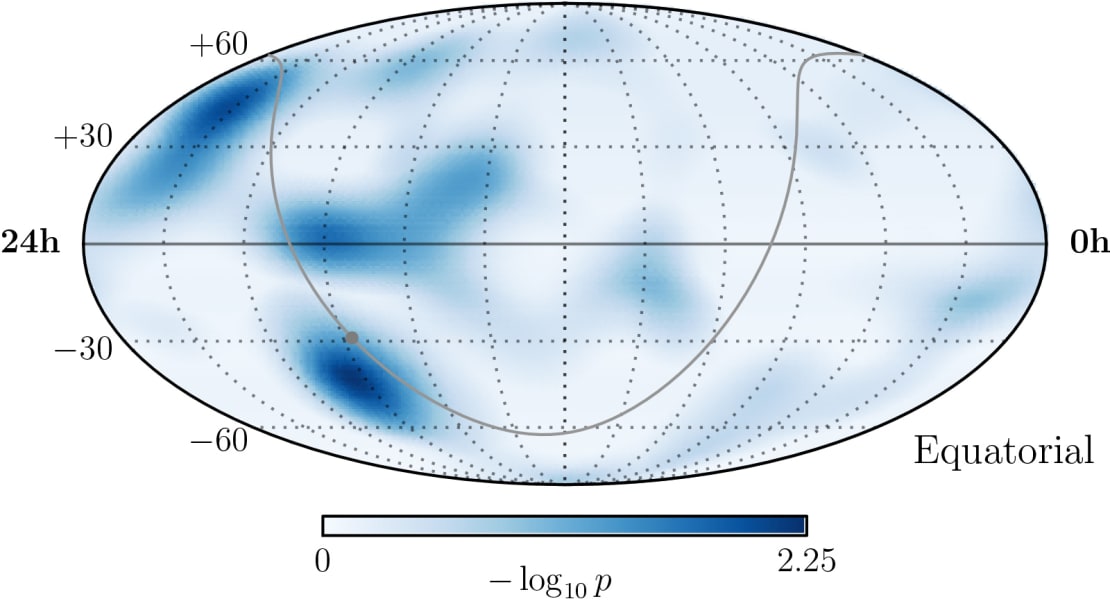Astrophysical neutrinos show up with two different signatures in IceCube: tracks and cascades. The direction of tracks, produced by muon neutrino charged interactions, can be reconstructed with an angular resolution of less than a degree. On the other hand, the direction of cascade events, produced by muon neutrino neutral interactions or electron and tau neutrino interactions, can only be reconstructed with a resolution of 10-20 degrees.
Most IceCube efforts to identify the first sources of astrophysical neutrinos have concentrated on tracks, especially those with an origin in the Northern Hemisphere, where the atmospheric muon background is almost negligible. Now, the IceCube Collaboration presents the first search for neutrino sources using cascade events with an energy above 1 TeV. Although no significant clustering was observed, this method provides an independent technique to search for astrophysical neutrino sources. These results have just been submitted to The Astrophysical Journal.

From May 2010 to May 2012, IceCube detected 263 cascades that started in the detector. Using those, researchers have looked for point-like sources anywhere in the sky, for neutrinos correlated with an a priori catalog, and for neutrinos associated with the galactic plane.
The all-sky search looking for deviations from the isotropic expectation did not find any significant clustering, nor did the search for emission from the galactic plane. Researchers have also searched for neutrino emission correlated to catalog sources, which allowed setting upper limits on the flux from each object in the catalog.
Even though no significant clustering was observed, the study shows that these cascades provide a better sensitivity to sources in the southern sky.
“It is very challenging to obtain a high-purity selection of muon neutrino events from the southern sky in IceCube,” says Mike Richman, a researcher at Drexel University and a corresponding author of this paper. “Cascade events are easier to distinguish from the large cosmic ray muon background, which results in a much lower energy threshold for sources in the southern sky.”
The source searches were performed with a sample of cascade events previously studied in the context of spectral measurements over the entire sky. The angular resolution is much better for tracks, but since the cascade channel benefits from a low rate of atmospheric backgrounds, it offers a complementary view of southern sources.
The collaboration is now working on improvements that will reduce the angular resolution for IceCube cascades and provide a better understanding of the relevant systematics.
+ info “Search for astrophysical sources of neutrinos using cascade events in IceCube,” The IceCube Collaboration: M. G. Aartsen et al. The Astrophysical Journal 846 (2017) 136, iopscience.iop.org arXiv.org/abs/1705.02383